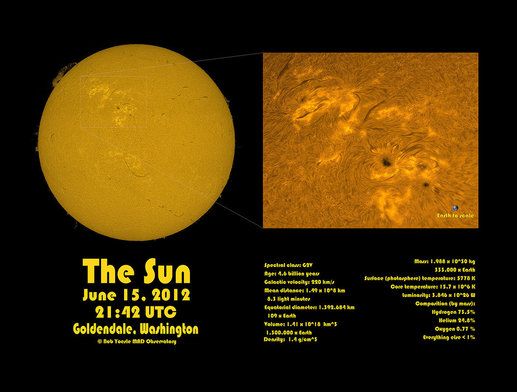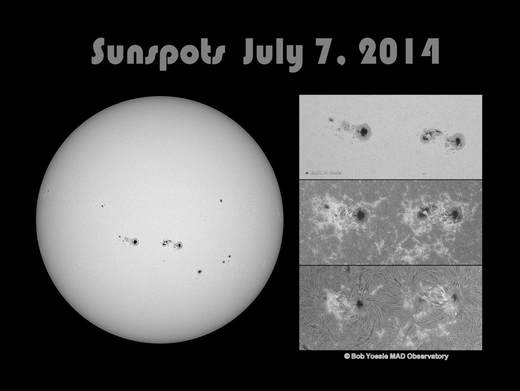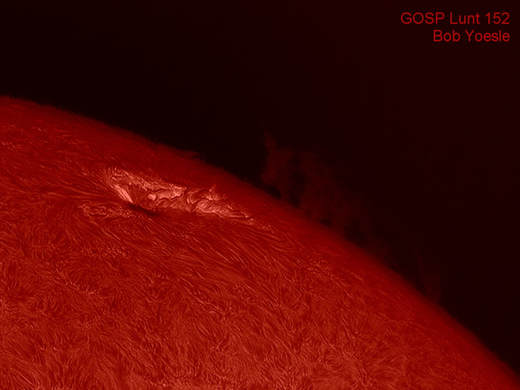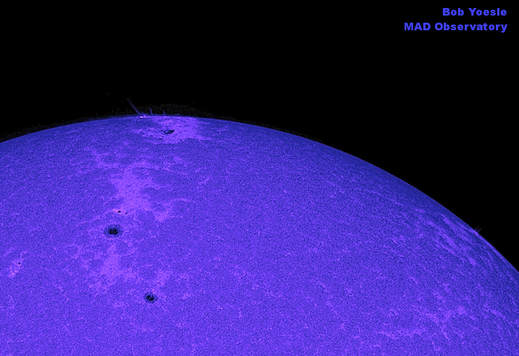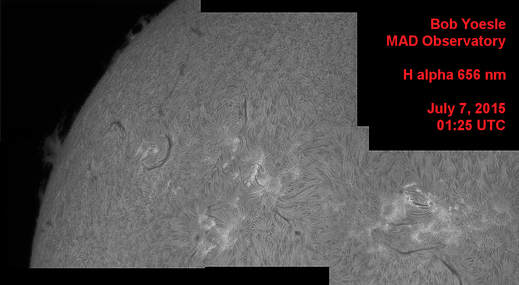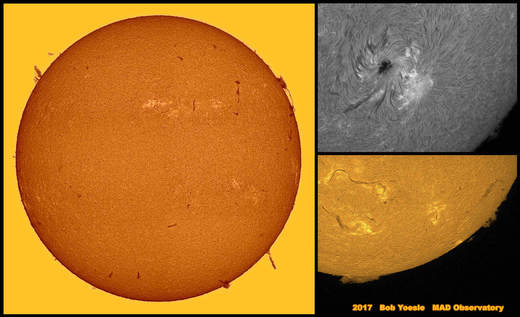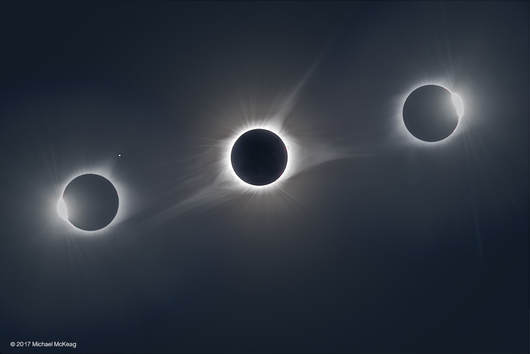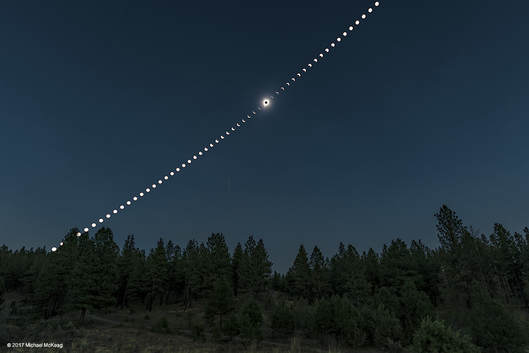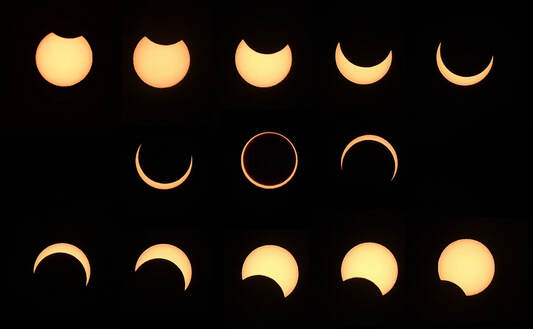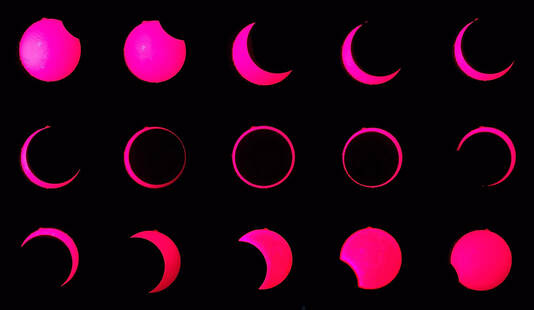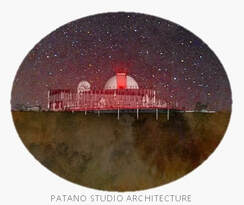Solar Images
All materials are property of their respective contributors
Click on images for enlarged views.
Click on images for enlarged views.
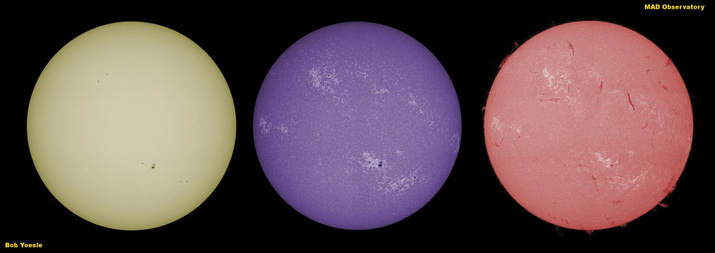 Left - photosphere, Middle - chromosphere CaK (394 nm), Right - H-alpha chromosphere (656 nm).
Left - photosphere, Middle - chromosphere CaK (394 nm), Right - H-alpha chromosphere (656 nm).
There are two layers of the sun that can be observed outside of a total solar eclipse; the photosphere (sphere of light) and chromosphere (sphere of color). The photosphere is 100,000 times brighter than the chromosphere. The blindingly bright photosphere can made safe to observe or image with relatively simple (hence inexpensive) broad-band “continuum” filters. This allows one to observe sun spots, granulation, and faculae.
Within the bright continuous spectrum of the photosphere there are specific absorption lines from various elements. Identical wavelength but narrower emission lines originate higher above the photosphere in the chromosphere. Therefore, observation of the much dimmer chromosphere requires the use of very narrow-band filters in order to look at specific emission spectral lines contained within the underlying photosphere absorption line, while at the same time not allowing any adjoining continuum from the photosphere through.
The most interesting emission lines of the solar chromosphere are the Hydrogen alpha (H-alpha) emission and the Calcium K-line (CaK) emission. These filter systems allow one to observe and image prominences, flares, filaments, plage, and other dynamic features. These filters are made of a complex stew of "interference" and other types of filters, and hence are much more expensive compared to simple continuum filters.
Never look at the Sun without filters approved for solar observation - instant and permanent eye damage may otherwise occur. Both continuum and chromosphere filters need to have very good blocking (OD5+) of ultraviolet and infrared wavelengths to be safe for visual use.
Within the bright continuous spectrum of the photosphere there are specific absorption lines from various elements. Identical wavelength but narrower emission lines originate higher above the photosphere in the chromosphere. Therefore, observation of the much dimmer chromosphere requires the use of very narrow-band filters in order to look at specific emission spectral lines contained within the underlying photosphere absorption line, while at the same time not allowing any adjoining continuum from the photosphere through.
The most interesting emission lines of the solar chromosphere are the Hydrogen alpha (H-alpha) emission and the Calcium K-line (CaK) emission. These filter systems allow one to observe and image prominences, flares, filaments, plage, and other dynamic features. These filters are made of a complex stew of "interference" and other types of filters, and hence are much more expensive compared to simple continuum filters.
Never look at the Sun without filters approved for solar observation - instant and permanent eye damage may otherwise occur. Both continuum and chromosphere filters need to have very good blocking (OD5+) of ultraviolet and infrared wavelengths to be safe for visual use.
|
Ring of Fire The October 14, 2023 annular solar eclipse. Multiple exposure sequences in white light and H alpha - capturing both the partial phases as well as the "ring of fire" as the Moon passed centrally in front of the Sun - as seen near Albuquerque, NM. |
|
